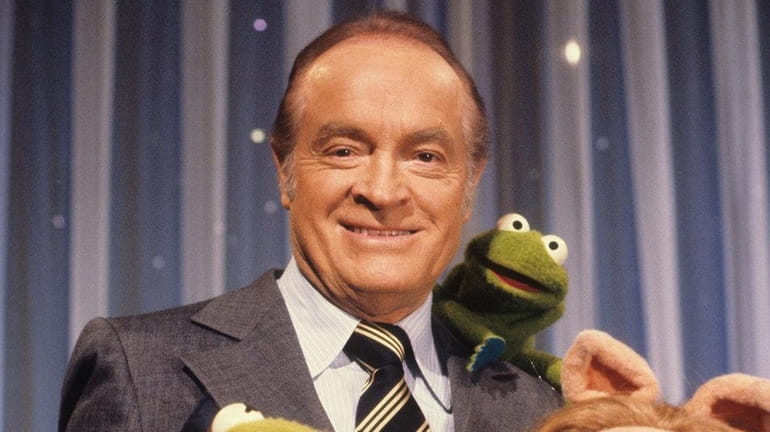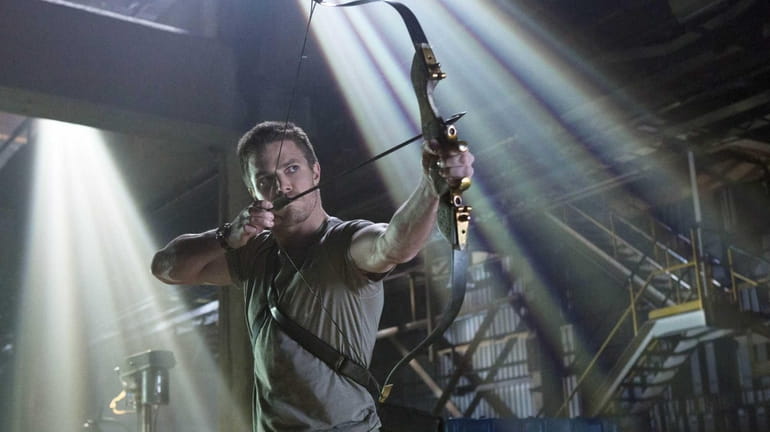‘This Is Bob Hope’ review: Well-done look at an entertainment legend

Bob Hope was joined by Muppets Kermit the Frog and Miss Piggy on his "Bob Hope All-Star Christmas Comedy Special" in December 1977. Credit: Bob Hope Legacy LLC
DOCU-PORTRAIT “This Is Bob Hope” on “American Masters”
WHEN | WHERE 9-11 p.m. Thursday on WNET/13 (also 7 p.m. Saturday on WNEW/13 and 8 p.m. Dec. 10 on WLIW/21)
WHAT IT’S ABOUT Bob Hope means different things to different people, but this premier American entertainer of the 20th century likely means little to Millennials, who grew up after his ’90s retreat from public view and 2003 death at the age of 100. They may have heard older fans debate Hope’s comic attitude or political slant. Maybe their parents recall his TV specials or their grandparents caught his radio gigs and movies. Still, what to make of Hope’s towering showbiz status?
“American Masters” dissects the comedian’s humor and image through all his decades in the spotlight. For such an American icon, Hope was actually born in England and brought over as a child, before growing into such a national treasure that his last TV special (Variety counted it his 284th) “Laughing With the Presidents” in 1996, showed him with leaders from Franklin Roosevelt to Bill Clinton.
Yet Hope had been alongside trench soldiers, too, touring war zones to make the troops laugh from World War II and Korea to Vietnam and Iraq’s Desert Storm. He would become as beloved for those tours as for his top-grossing ’40s films and star-laden TV specials of the ’60s and ’70s.
That’s where Hope got caught in the crosshairs, during the debate over America’s Vietnam involvement. His standing took a hit among youth protesting the war. PBS’ portrait captures that dichotomy of affection and antipathy, as well as talk of Hope’s personal aloofness and philandering.
But “American Masters” is most invested in showing what made Bob Hope a household name. Vintage photos and film show Hope making his mark, starting in 1920s vaudeville. Most comics then who tried radio or movies worked in character (Jack Benny was cheap, Gracie Allen was daffy). Hope instead was himself, an energetic (if spineless) go-getter. That made him, says pop-culture chronicler Richard Zoglin, “the inventor of what we today think of as stand-up comedy.” He was brash, cheeky, topical, with a relatable guy-next-door persona.
That translated well to TV in the ’50s, when Hope was still 50ish himself. By the time counterculture took hold in the ’70s of “Saturday Night Live,” admits Hope’s daughter Linda, her dad was out of touch. Says Conan O’Brien, “I got to know him at exactly the wrong time.”
MY SAY Writer-director John Scheinfeld’s other bio subjects have included John Coltrane and John Lennon. He can deliver warts-and-all. But Scheinfeld never loses sight of the body of work that made us care in the first place. He judiciously excerpts movies and TV specials, while curating comments from Hope peers and heirs — writers Larry Gelbart and Sherwood Schwartz, raconteurs Dick Cavett and Leonard Maltin, comics Margaret Cho and Woody Allen. (Also, in a misfire, Kermit the Frog.) Billy Crystal voices Hope’s own words, not with mimicry but timing and verve.
BOTTOM LINE Making sense of Hope is hard work. Here, it’s been keenly done.

